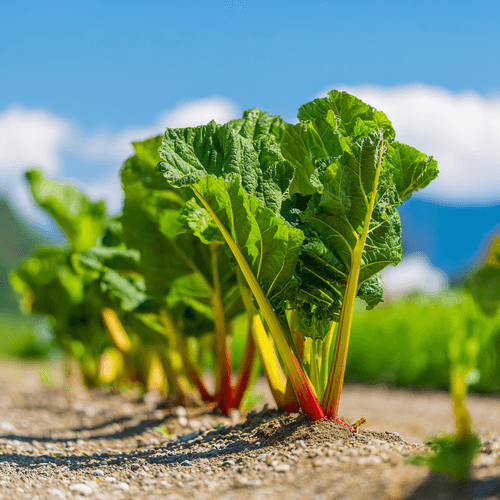Did you know ?
- 1 The leaves of rhubarb are poisonous due to high oxalic acid content.
- 2 Rhubarb was originally cultivated for medicinal purposes in ancient China.
- 3 Rhubarb can live and produce stalks for up to 20 years.

Rhubarb is a perennial vegetable grown for its tart, fleshy stalks, which are commonly used in desserts, jams, and sauces. While its leaves are toxic, the colorful stalks are a springtime favorite in kitchens around the world.
Did you know ?
View other Stem vegetables
Nutrition
| Calories | 26 kcal |
| Proteins | 1.1g |
| Carbohydrates | 5g |
| of which sugars | 1.3g |
| Fiber | 2.2g |
| Fats | 0.2g |
Ripeness
Selection
Storage and ripening
If you harvested or bought underripe rhubarb, try these tips :
Health
Origin
Rhubarb is native to Asia, particularly China, where it was used medicinally over 2,000 years ago. It spread to Europe in the 17th century and became popular in North America by the 1800s. Today, rhubarb is cultivated in temperate regions worldwide.
Recipes
Gallery
There is no images yet. Submit one now to contribute to the gallery !
F.A.Q
Warnings
Looks similar but has edible leaves and is less tart; stalks are often green, red, or yellow.
Green stalks, mild flavor, and edible leaves; not tart or used in desserts.
Thistle-like vegetable with thick, pale stalks; must be cooked and is not tart.